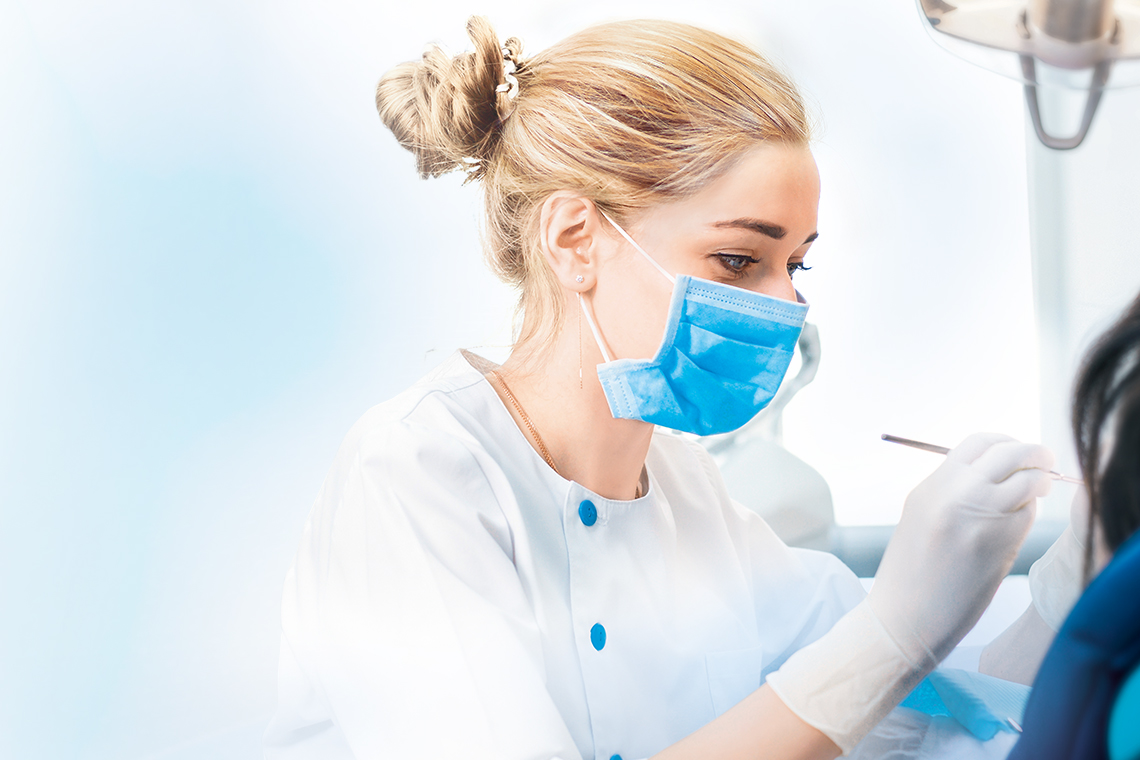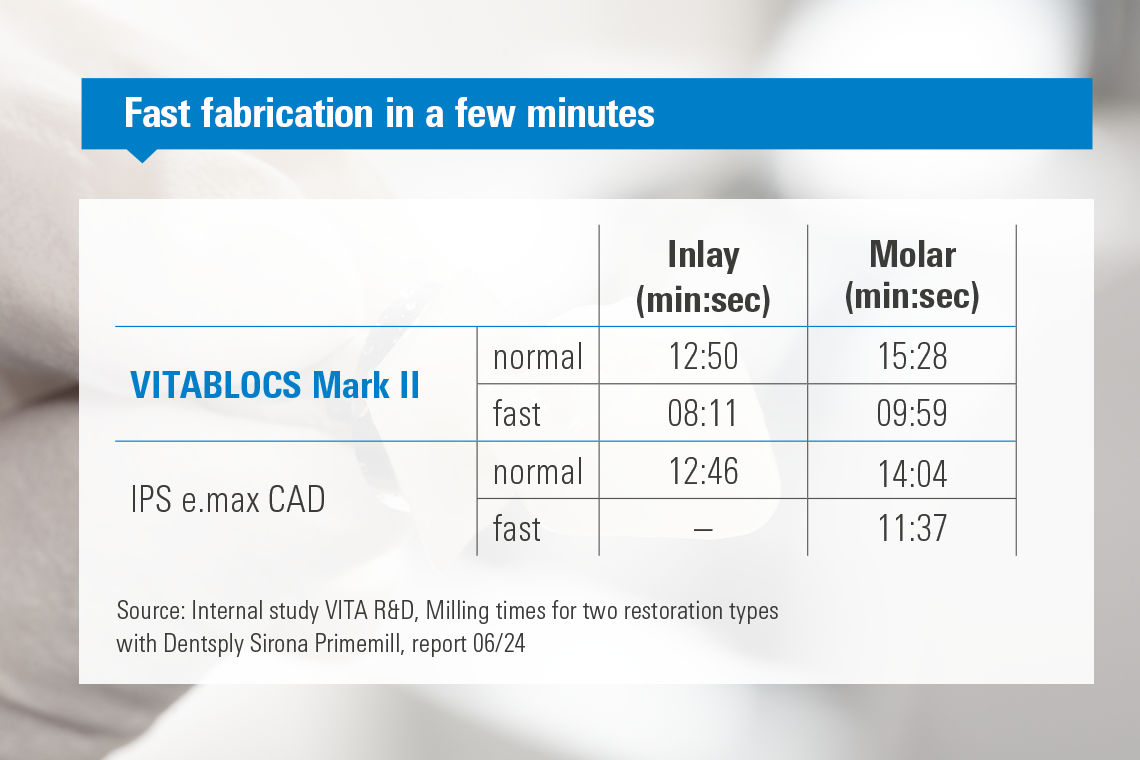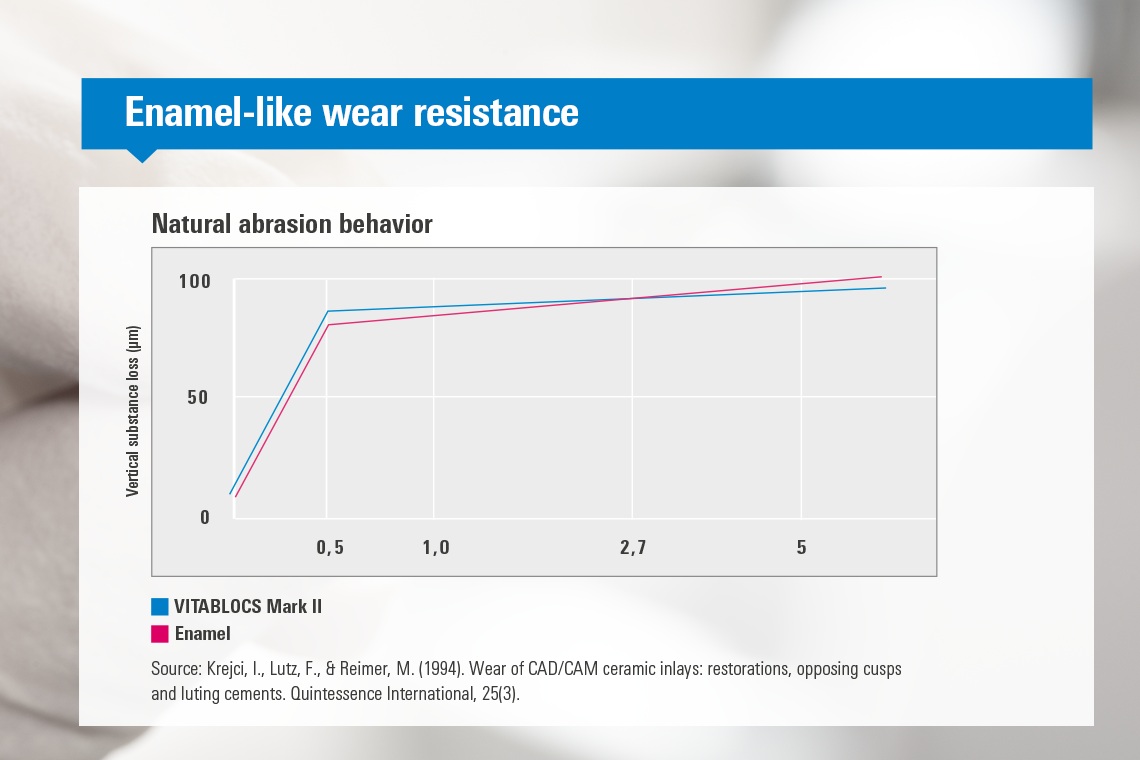The VITABLOCS CAD/CAM ceramic has been a real classic for decades, with a scientifically proven success story. Read more about the potential of VITABLOCS and the available scientific data. Find out what makes this CAD/CAM material so unique and why this material from the southern Black Forest has become an indispensable part of the daily routine in countless dental practices across the world. Let yourself be inspired, motivated and impressed by a material that makes the daily routine in the dental practice even more successful in the long term.
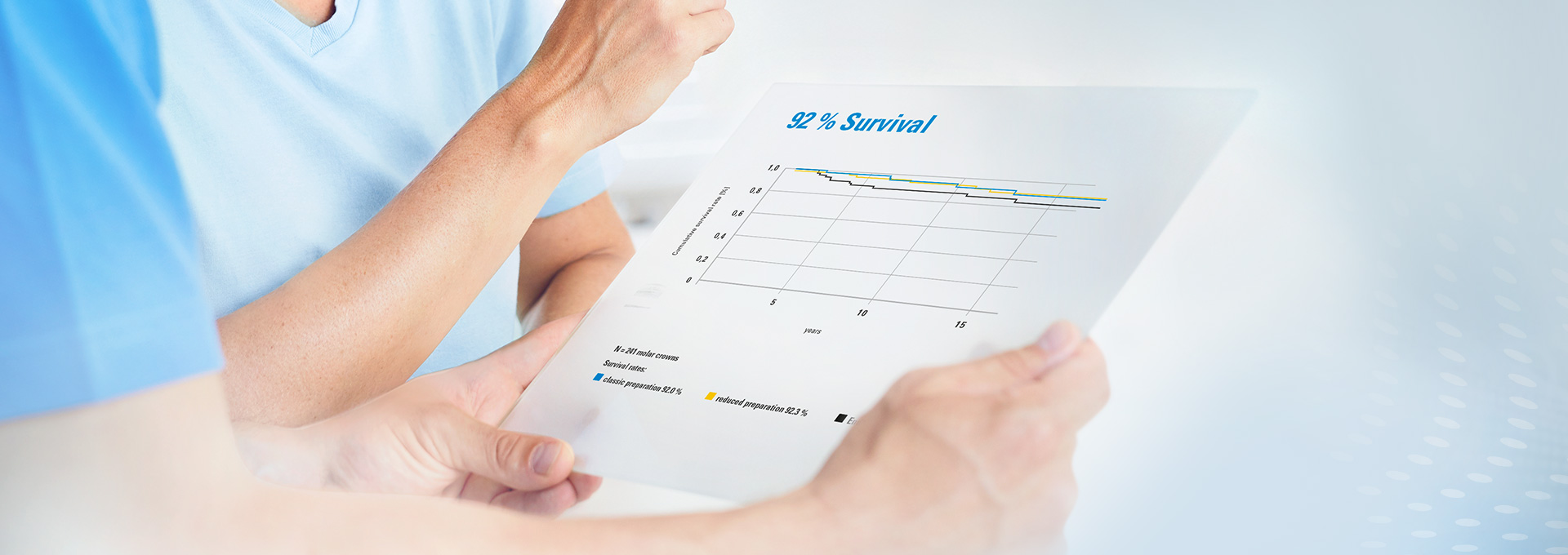
40 years of VITABLOCS – A scientifically proven success story
VITABLOCS – developed in the small town of Bad Säckingen – is just one example of a German invention that is known today throughout the world.
No material shaped the success of CEREC so profoundly as the VITABLOCS CAD/CAM ceramic. Without the spirit of invention, ceramic expertise and the courage of VITA Zahnfabrik, CEREC might not have become what it is today: a technology that has proven its worth for 40 years with solid scientific data.
VITABLOCS: A classic component of CAD/CAM dentistry
The history of VITABLOCS begins at the start of the 1980s at the same time as the development of CAD/CAM-supported fabrication in dentistry. With dedication, courage, enthusiasm and perseverance, the creators of CEREC technology at the time were part of an impressive success story. Since then, the VITABLOCS CAD/CAM feldspar ceramic has solidly and reliably impressed dentists across the world, without the need for loud marketing slogans. For 40 years, single-tooth restorations made from VITABLOCS have been dealing with every day challenges. Over the years, researchers across the world have collected a wealth of data that confirms the functional and esthetic long-term stability of VITABLOCS. In addition to all the daily successes in dental practices, scientific conclusions can be drawn that are unparalleled.
The success story of VITABLOCS is shaped by some important milestones:
- 1985: The first CAD/CAM-fabricated inlay in the world made from VITABLOCS is fitted intraorally in a patient (University of Zurich).
- 1986: The monochromatic feldspar ceramic blocks VITABLOCS are available on the market and are used throughout the world in CEREC milling units.
- 2007: The polychromatic variant VITABLOCS TriLuxe forte with shade gradients from the neck to the incisal edge is launched so that esthetic needs can be effectively met.
- 2010: The portfolio is expanded with VITABLOCS RealLife. This block has a three-dimensional curved shade gradient between the dentine and the incisal edge so that even the highest esthetic demands (e.g., in the anterior region) can be realized monolithically.
Since 1990, more than 30 million VITABLOCS blanks have been processed. Today, new CAD/CAM materials must measure up time and time again in science against this established gold standard.
Study data: Inlays and onlays made from VITABLOCS
The data with the longest study periods is available for CAD/CAM-fabricated inlays and onlays. Whether the data is from individual dental practices or universities – the long-term results are outstanding.
- In a Swiss dental practice, 200 restorations of this kind were fabricated using VITABLOCS, fitted based on defined criteria, and subject to three follow-up examinations over a period of 27 years. After 10 years, the survival rate was 90.4 % [1], after 17 years 88.7 % [2] and after 27 years 87.5 % [3], which the researchers consider highly acceptable from a clinical standpoint in the daily practice routine.
- At the University of Cologne, 2328 of these types of restorations were fitted based on a defined methodology with follow-up over a period of nine years. Survival rate: 95.5 %.
- In the case of restoration of the complete occlusal surface with overlays, researchers from Austria documented a survival rate of 99.3 % after almost eight years. [4]
- 14 relevant clinical studies on inlays, onlays and overlays with VITABLOCS were also combined in a review by researchers from Brazil and Switzerland. Here, a survival rate of 91 % was determined after 10 years. [5]
Case study from Dr. Oxana Naidyonova (Karaganda, Kazakhstan)
Treatment of tooth 27 (that previously underwent root canal treatment) using an overlay made from VITABLOCS Mark II
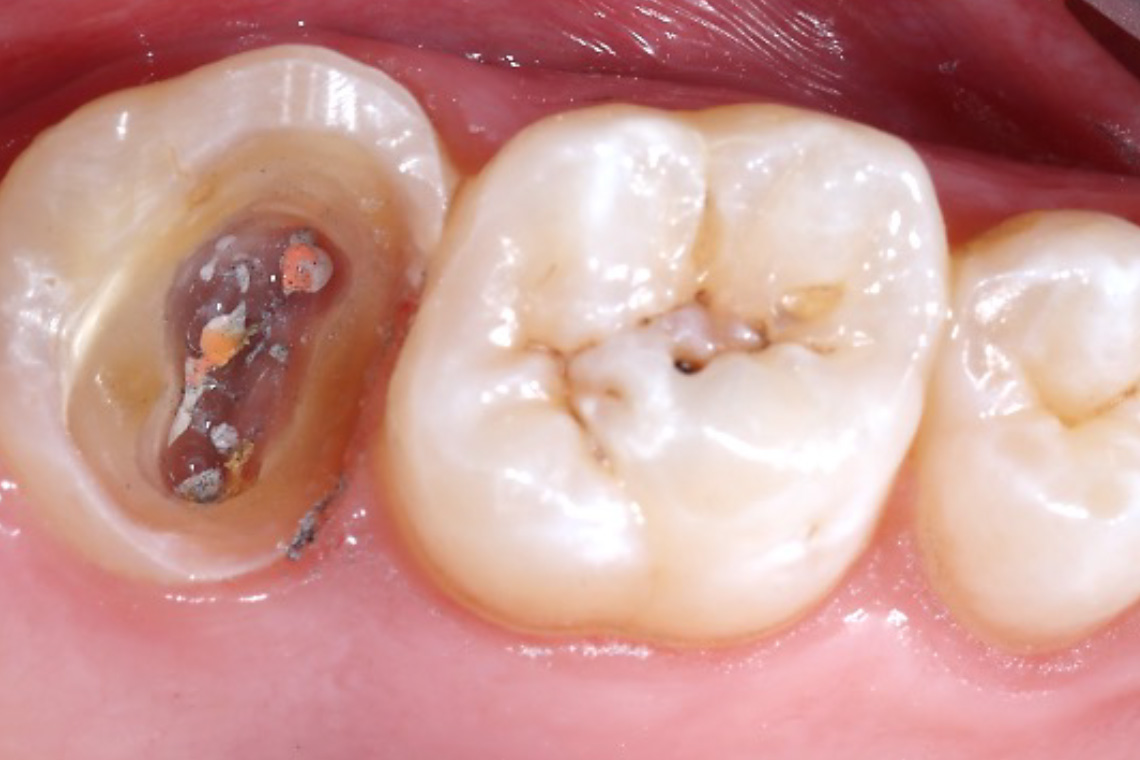
Fig. 1 Initial situation after excavation of caries and root canal treatment of tooth 27
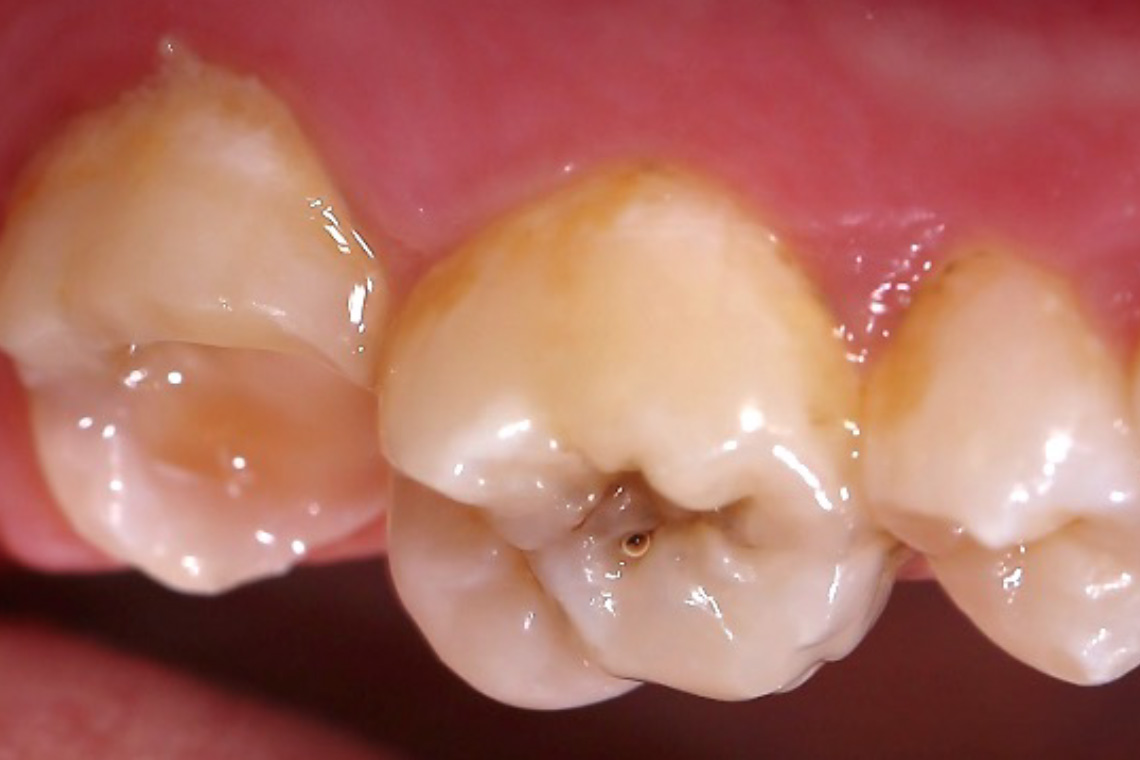
Fig. 2 Overlay preparation of the tooth with shortening of the buccal cusp
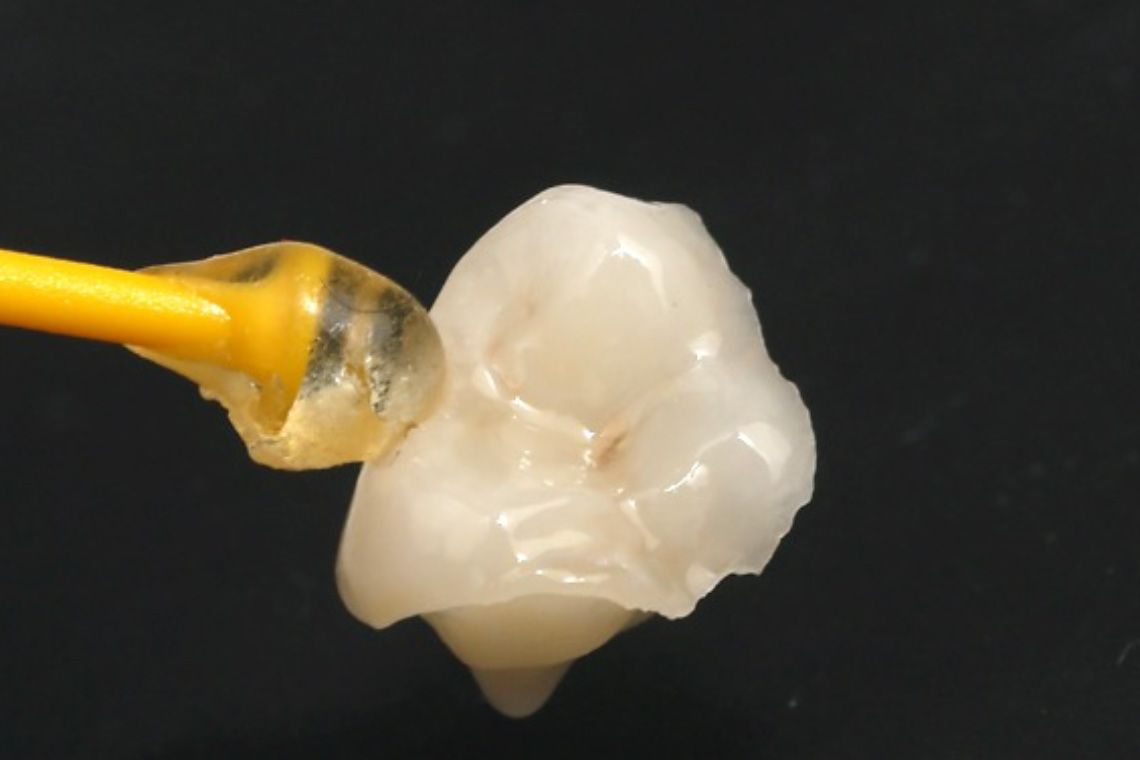
Fig. 3 Overlay made from VITABLOCS Mark II prior to fully-adhesive intraoral bonding
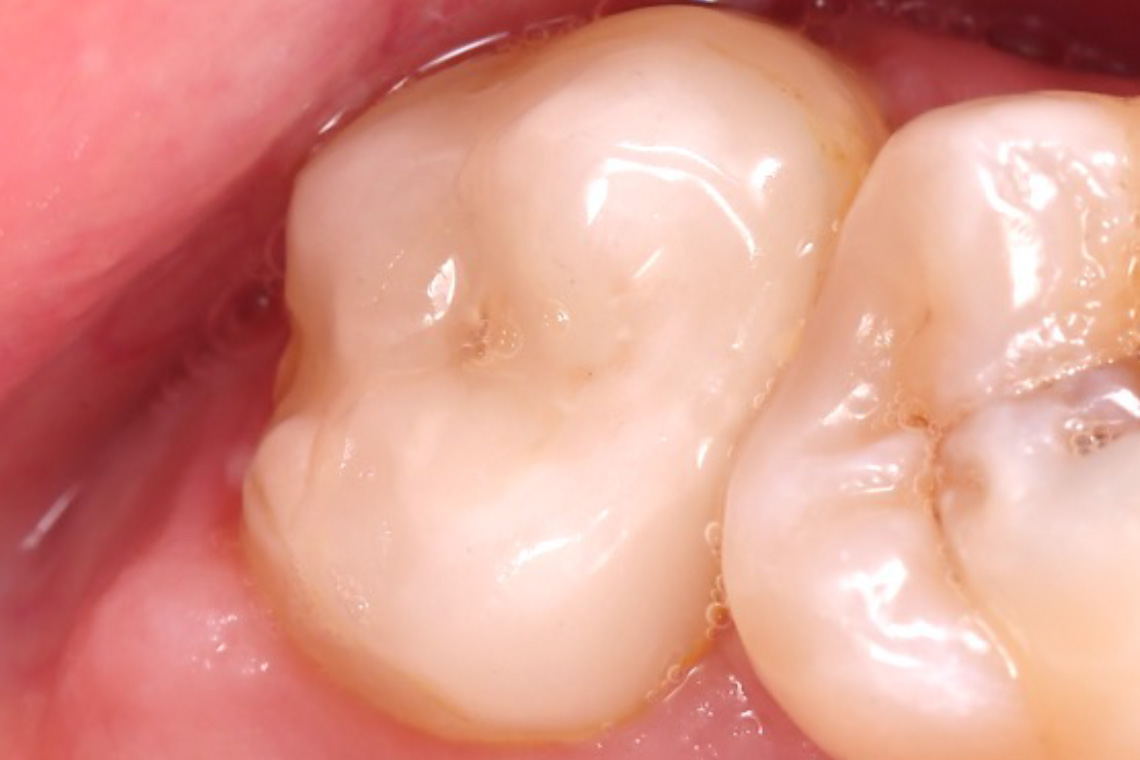
Fig. 4 The overlay made from VITABLOCS Mark II after 2.5 years in situ
Case study by PD Dr. Andreas Bindl, Associate University Professor, Zurich, Switzerland
Follow-up examination after 14 years of the long-term stability of an inlay made from VITABLOCS Mark II. The harmonious abrasive processes in the transition areas between the restoration and the tooth enamel can be clearly seen.
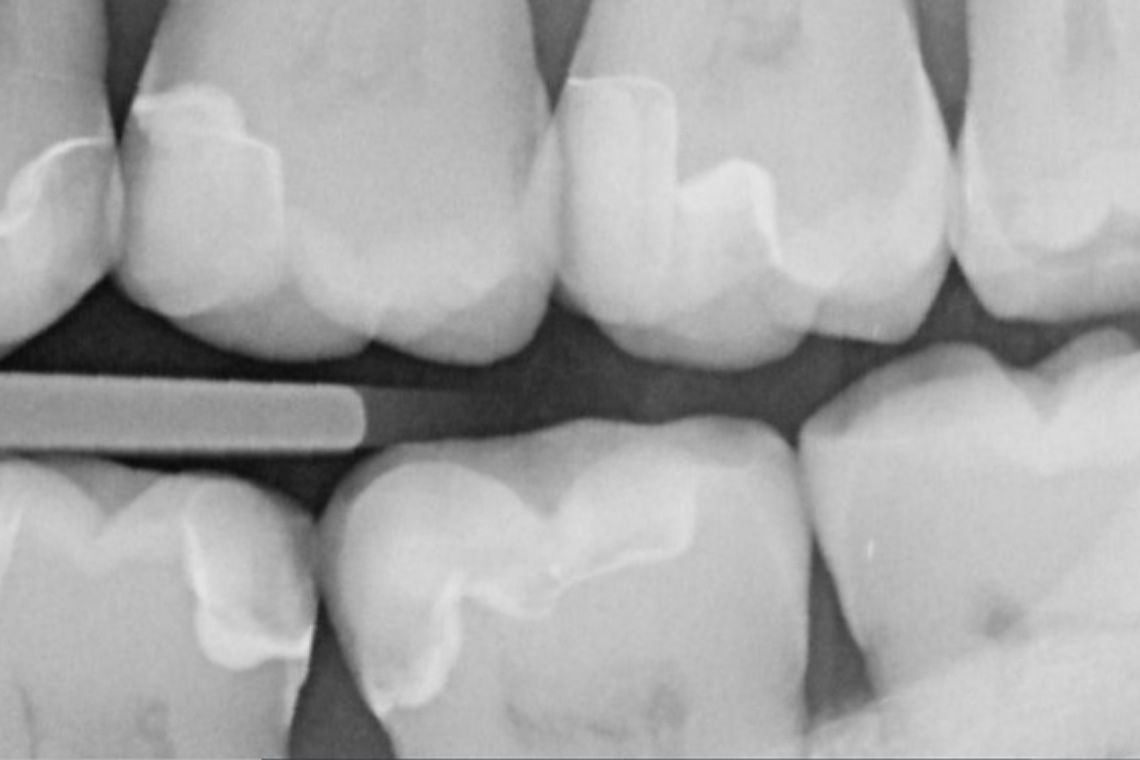
Fig. 5 Bitewing x-ray of an intact inlay on tooth 17 (om) after 14 years
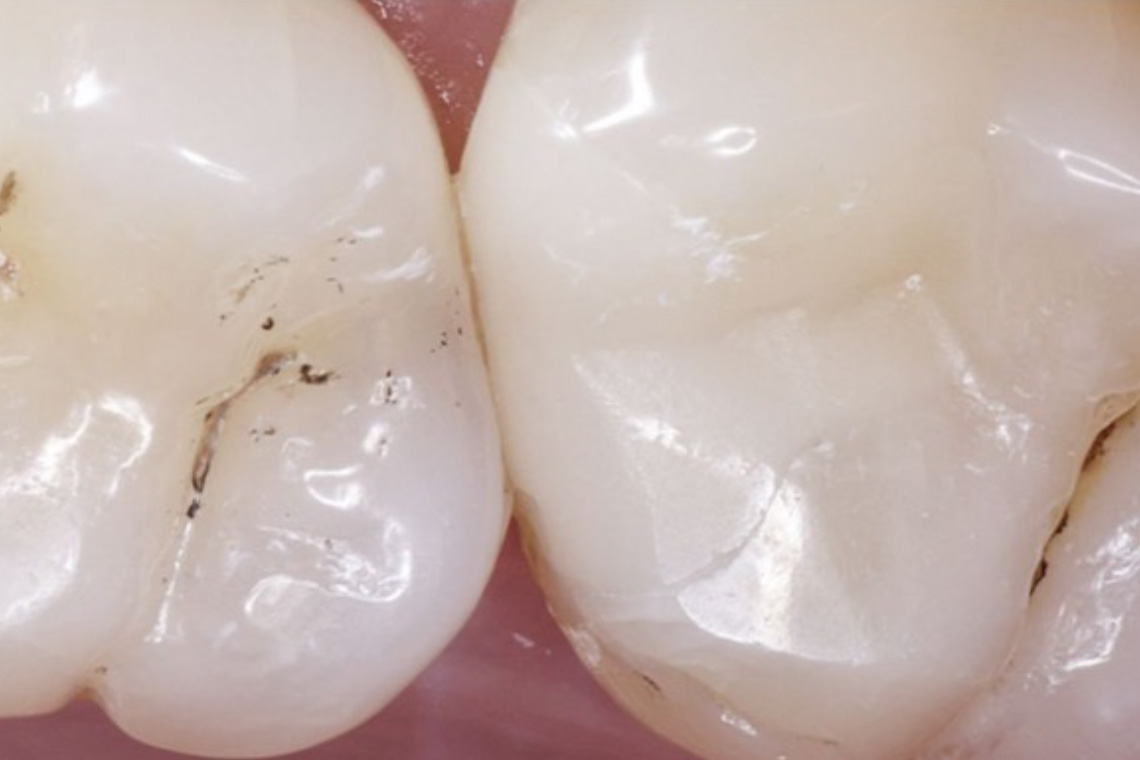
Fig. 6 Harmonious abrasion between the feldspar ceramic restoration and dental enamel
Study data: Crowns and endocrowns made from VITABLOCS
Crowns and endocrowns have also been fabricated for many years from the VITABLOCS feldspar ceramic using CAD/CAM technology. Once again, the solid long-term data here from dental practices and universities is impressive.
- In a dental practice in Switzerland, 40 crowns and 25 endocrowns were fitted on molars in accordance with defined criteria. After 12 years, the survival rate of the crowns was 95 %; for the endocrowns on more severely damaged molars that had undergone root canal treatment, the rate was 90.5 %. [6]
- In a clinical study of 212 full crowns and 235 endocrowns, researchers in France established a success rate after seven years of 98.66 %. With 99.6 %, the endocrowns even achieved a slightly higher success rate in this case than the group as a whole. [7]
- At the University of Zurich, molar crowns made from VITABLOCS with a conventional macroretentive stump height were certified after five years with a survival rate of 94.6 % by researchers; with a reduced stump height and an irregular stump geometry, the rate was 92.1 %, which is also indicative of the good conditioning properties and adhesion of the feldspar ceramic. [8]
Case study by PD Dr. Andreas Bindl, Associate University Professor, Zurich, Switzerland
Full crowns made from VITABLOCS Mark II on teeth 24 to 27 were documented directly after placement, as well as 17 and 20.5 years later.
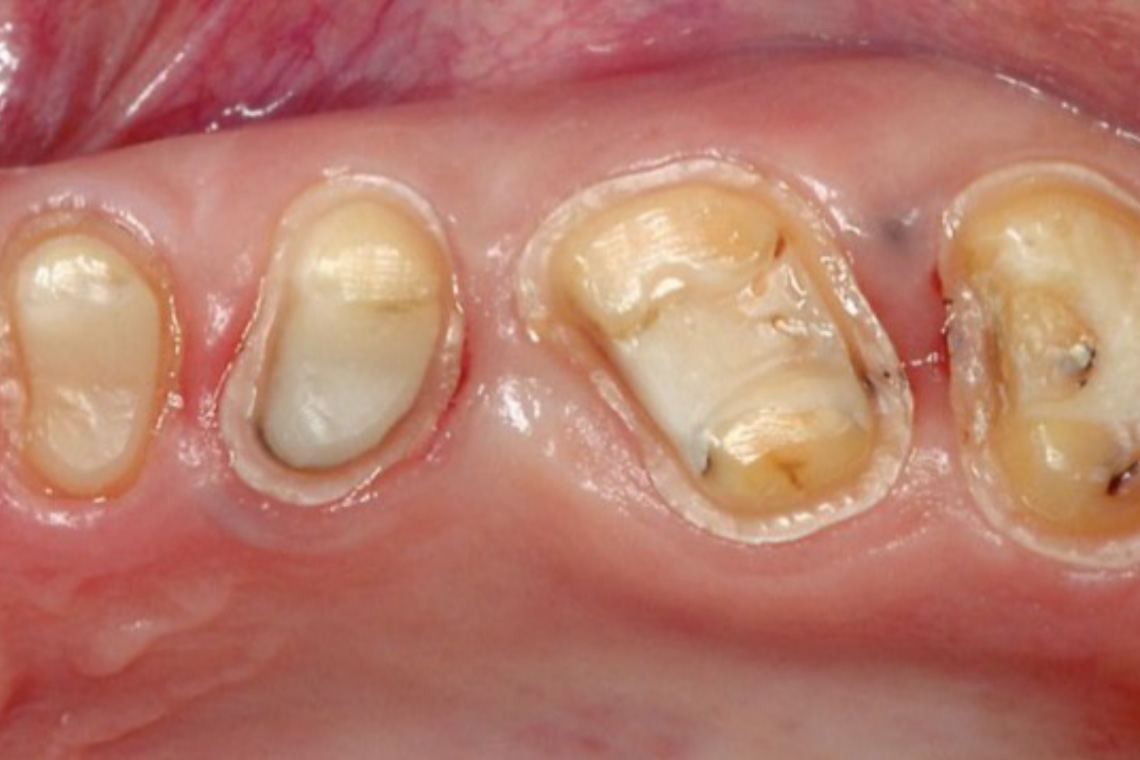
Fig. 7 Teeth 24 to 27 prepared for full crowns
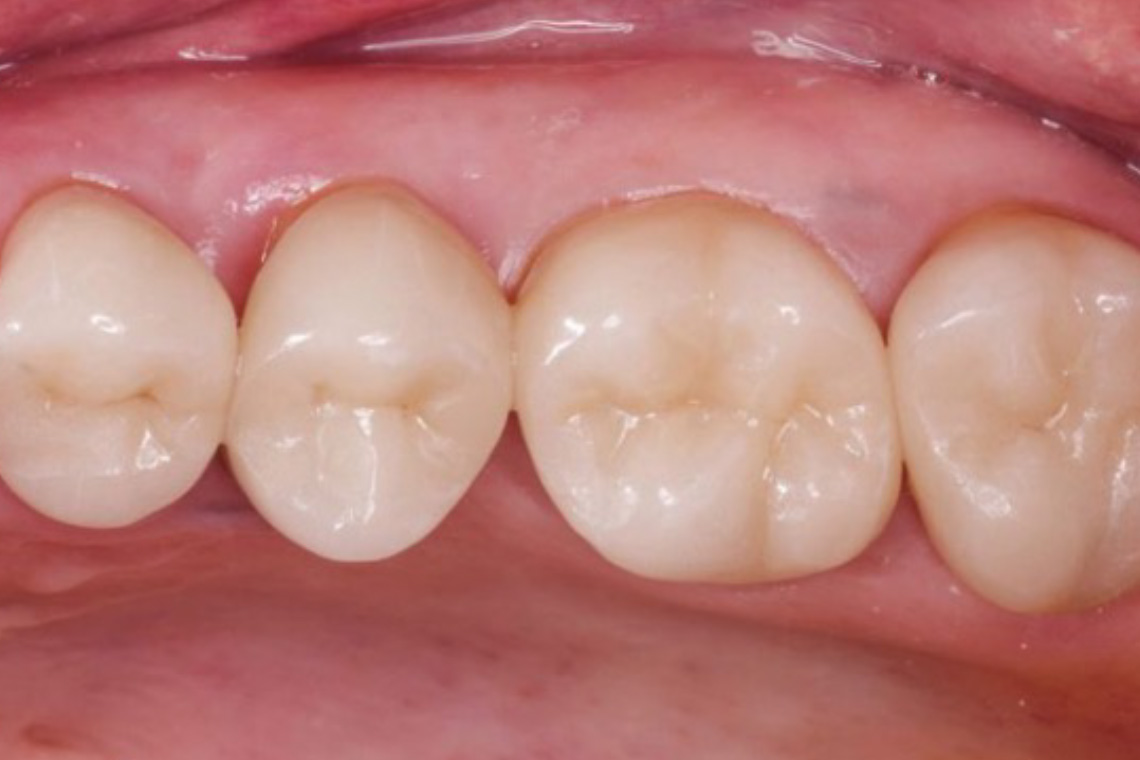
Fig. 8 The full crowns made from VITABLOCS Mark II in situ
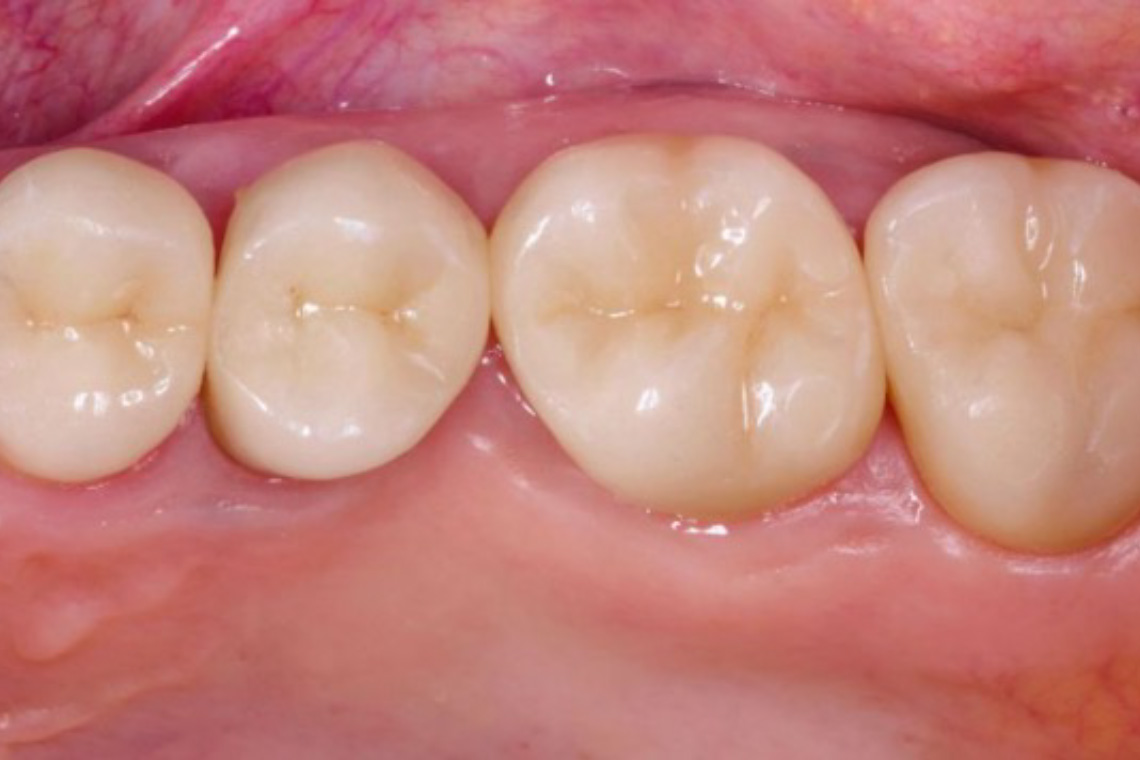
Fig. 9 Follow-up examination after 17 years …
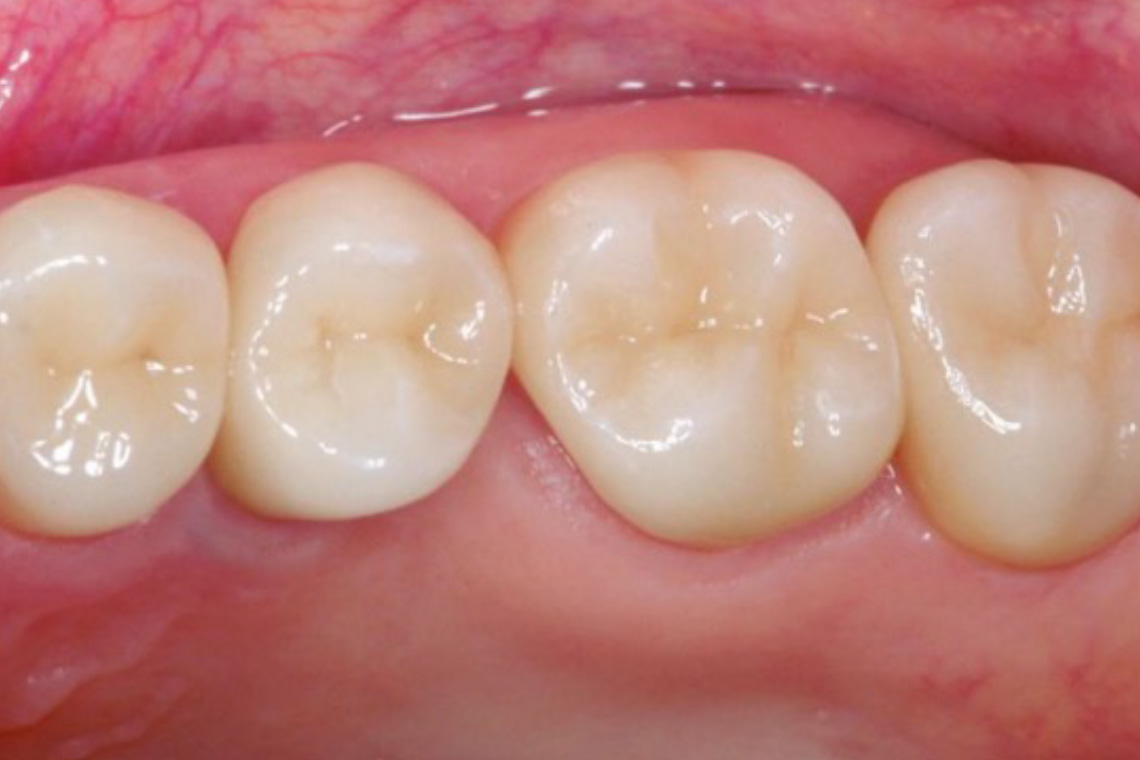
Fig. 10 … and 20.5 years after placement
Case study by PD Dr. Andreas Bindl, Associate University Professor, Zurich, Switzerland
Endocrown on a severely weakened tooth 16 with reduced retention and a limited remaining amount of enamel after a placement period of 17 years.
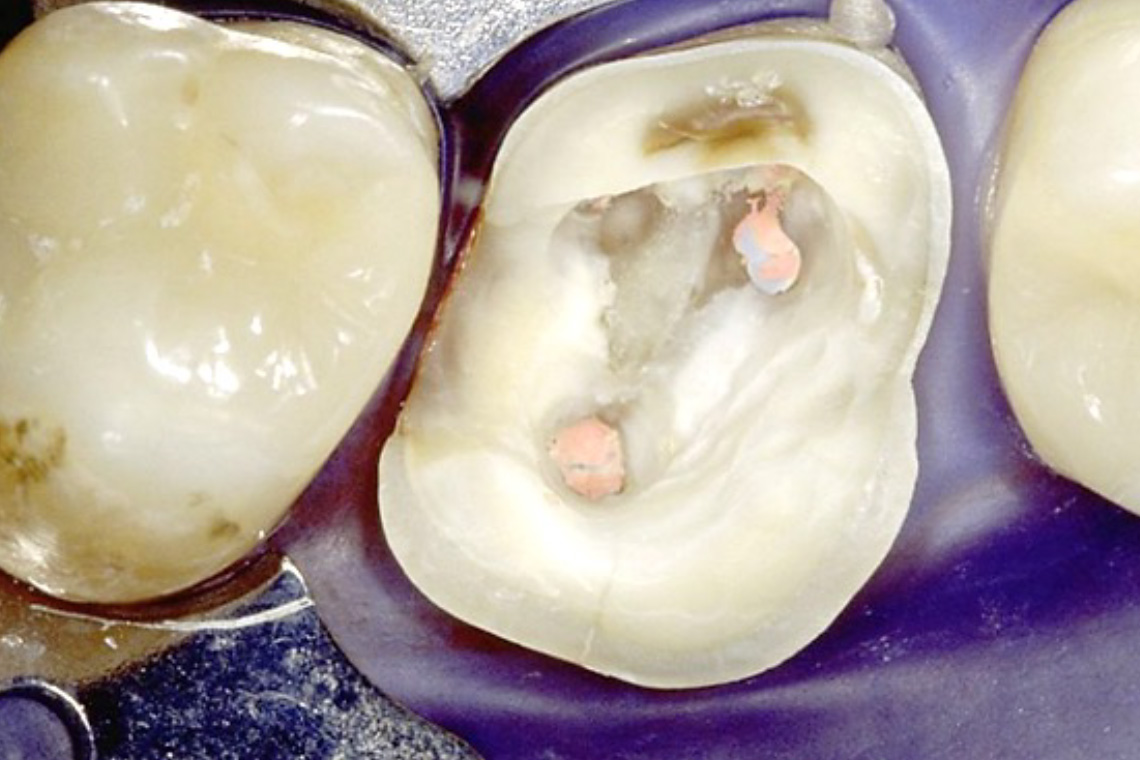
Fig. 11 Situation following root canal treatment of tooth 16
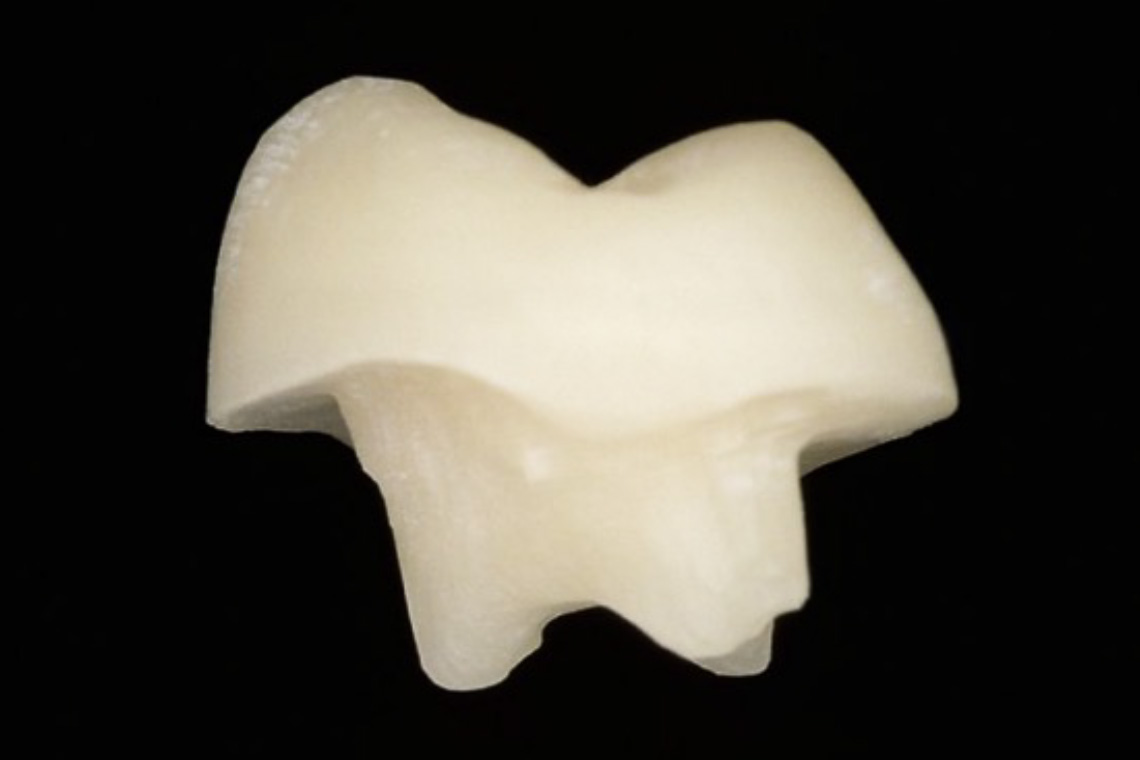
Fig. 12 The endocrown made from VITABLOCS Mark II
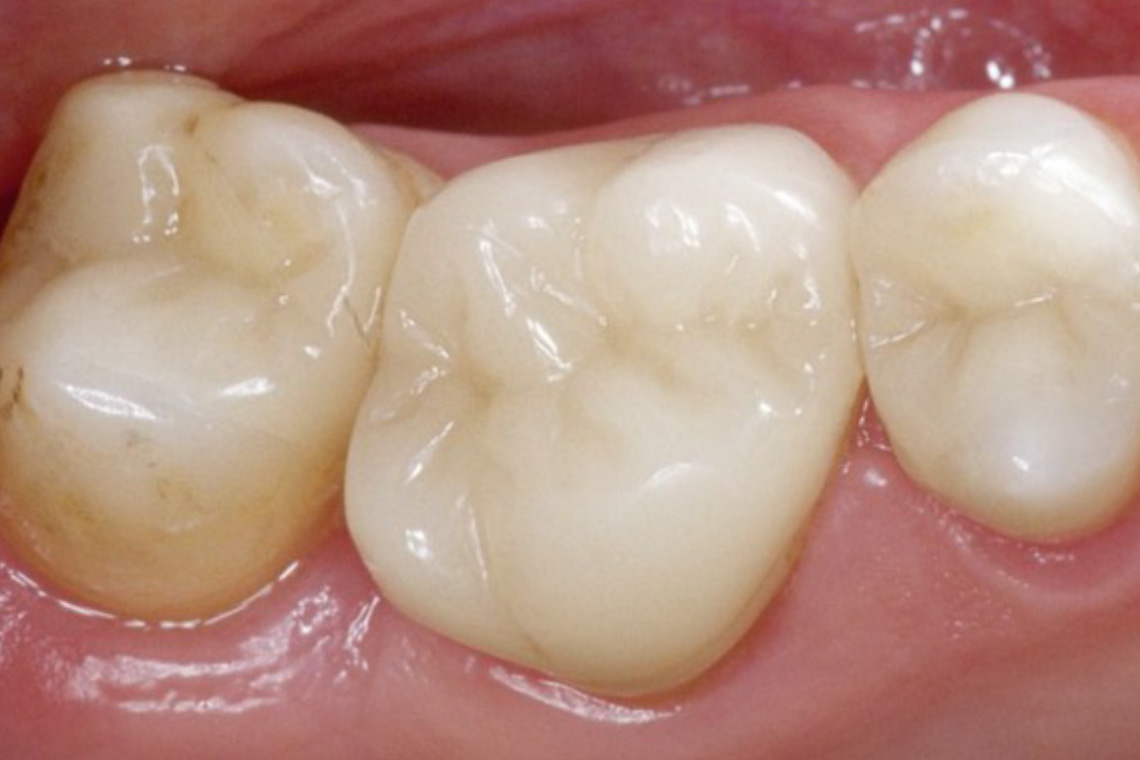
Fig. 13 Endocrown 16 directly after fully adhesive bonding …
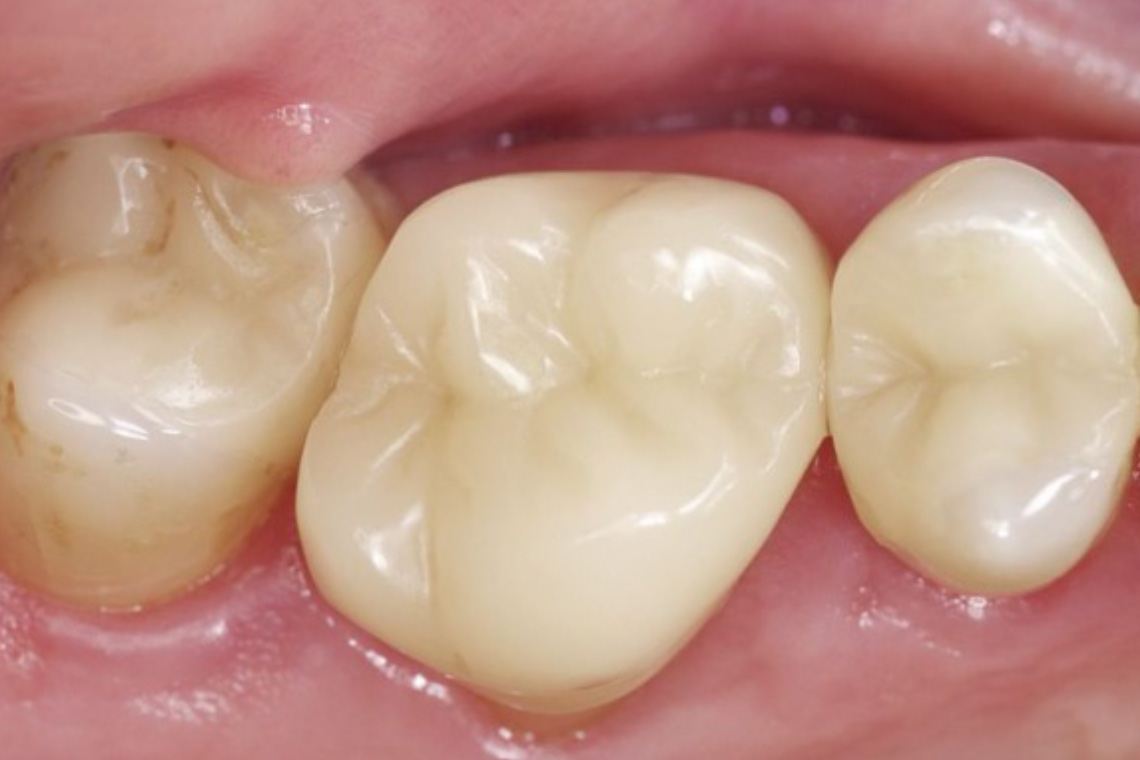
Fig. 14 … and condition after 17 years in situ
Study data: Veneers and anterior crowns made from VITABLOCS
VITABLOCS impresses demonstrably in the anterior region in dental practices and in universities with its esthetic long-term stability.
- In a dental practice in Germany, anterior teeth were treated almost exclusively using the feldspar ceramic with 509 veneers and partial crowns. Evaluation of the follow-up examination after nine and a half years showed a success rate of 94 %.
- In a review, researchers combined 13 relevant clinical studies on VITABLOCS veneers. After nine years, the restorations showed a survival rate of 87 %. [9]
Particularly the polychromatic variants VITABLOCS TriLuxe forte and VITABLOCS RealLife show their strengths in the anterior region and impress with outstanding esthetic integration.
Case study by Dr. Julio Gomez Paris (Santa Fe, Argentina)
Esthetic rehabilitation in the upper and lower jaw using VITABLOCS TriLuxe. Following bite elevation in the support area using crowns and partial crowns, it was possible to even out the fractured and abraded anterior dentition and establish a natural shade effect and morphology using monolithic material. To finish, only minimal characterization was carried out using the VITA AKZENT Plus stain system.
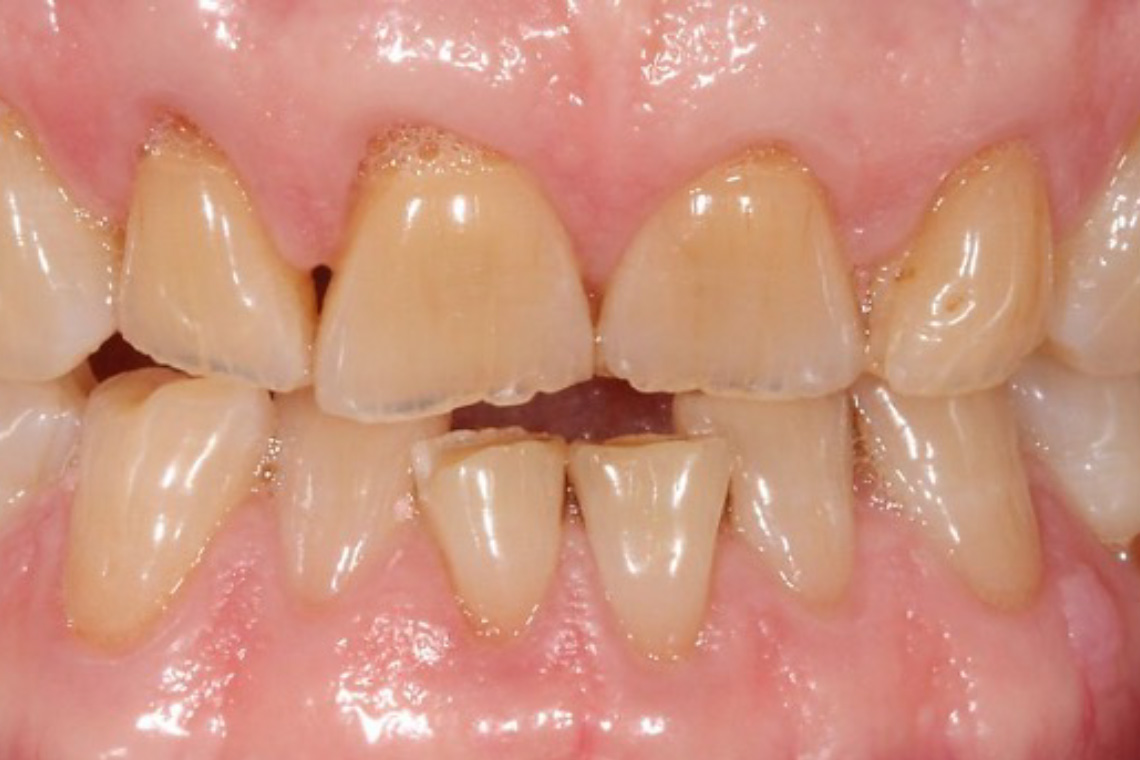
Fig. 15 Initial situation: Lowered bite and severe abrasion and fractures
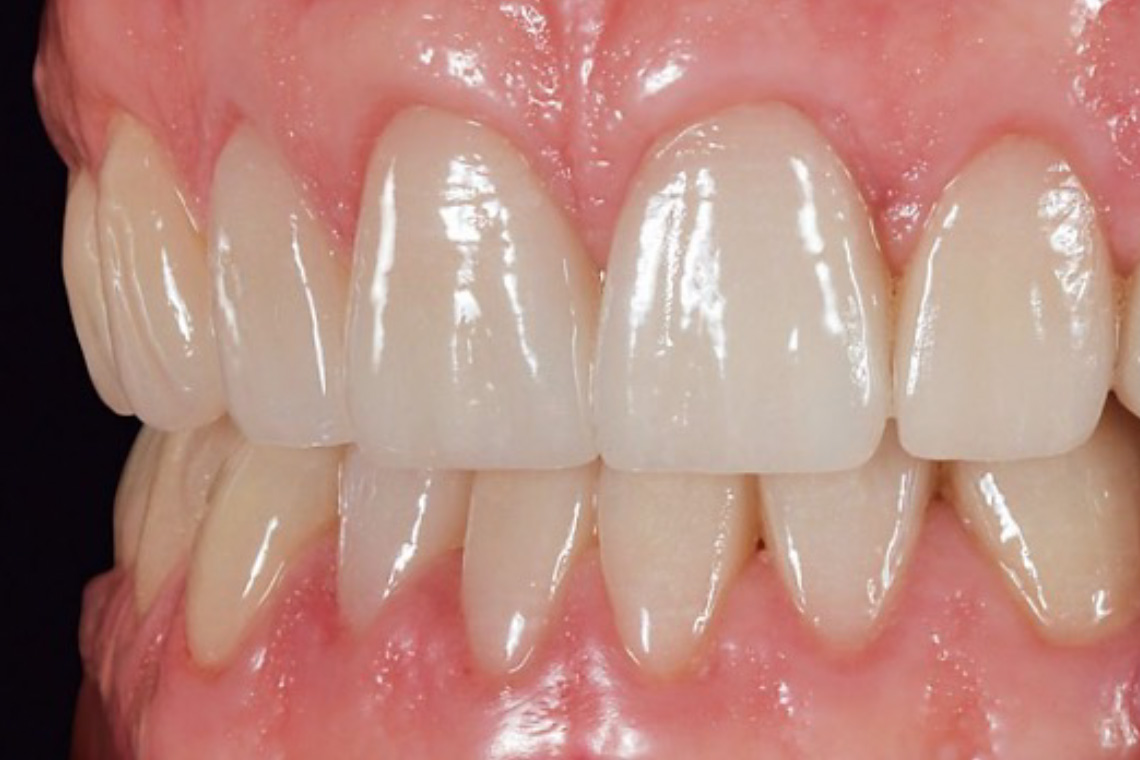
Fig. 16 Restorations made from VITABLOCS TriLuxe polychromatic material after 1.5 years
Overview: Reliable material properties for your daily practice routine
In addition to long-term stability during clinical follow-up, the VITABLOCS feldspar ceramic offers many proven material properties.
- Abrasion similar to enamel protects the antagonists and facilitates harmonious wear that prevents parafunction during long-term clinical follow-up. [10]
- The milling results from the CAD/CAM workflow are precise and dimensionally accurate. [11]
- The adhesive bond is proven and reliable. [12, 13, 14]
- The biocompatible material can be easily polished. [15]
- The restorations can be fitted immediately without additional firing.
- Depending on requirements, individual characterization is easily possible.
- Under clinical conditions, the material offers shade stability. [16]
- The excellent esthetics even facilitate the fabrication of challenging anterior restorations.
These proven properties facilitate efficient fabrication in the dental practice, as well as long-term intraoral stability. The proven material properties are scientifically tested and validated.
VITABLOCS has been an exciting success story for 40 years. Developed at the beginning of the 1980s in Bad Säckingen, the material is now a classic throughout the world. With the increasing prevalence of the digital workflow in dentistry, the story of VITABLOCS is sure to continue with many more chapters of scientific and real-life achievements.
- [1] Otto T, De Nisco S. Computer-aided direct ceramic restorations: a 10-year prospective clinical study of Cerec CAD/CAM inlays and onlays. Int J Prosthodont 2002 Mar-Apr; 15(2): 122-8.
- [2] Otto T, Schneider D. Long-term clinical results of chairside Cerec CAD/CAM inlays and onlays: a case series. Int J Prosthodont 2008 Jan-Feb; 21(1): 53-9.
- [3] Otto T. Up to 27-years clinical long-term results of chairside Cerec 1 CAD/CAM inlays and onlays. Int J Comput Dent 2017; 20(3): 315-329.
- [4] Arnetzl GV, Arnetzl G. Reliability of nonretentive all-ceramic CAD/CAM overlays. Int J Comput Dent 2012; 15(3): 185-97.
- [5] Morimoto S, Rebello de Sampaio FB, Braga MM, Sesma N, Özcan M. Survival Rate of Resin and Ceramic Inlays, Onlays, and Overlays: A Systematic Review and Meta-analysis. J Dent Res 2016 Aug; 95(9): 985-94.
- [6] Otto T, Mörmann WH. Clinical performance of chairside CAD/CAM feldspathic ceramic posterior shoulder crowns and endocrowns up to 12 years. Int J Comput Dent 2015; 18(2): 147-61.
- [7] Fages M, Raynal J, Tramini P, Cuisinier FJ, Durand JC. Chairside Computer-Aided Design/Computer-Aided Manufacture All-Ceramic Crown and Endocrown Restorations: A 7-Year Survival Rate Study. Int J Prosthodont 2017 November/December; 30(6): 556–560.
- [8] Bindl A, Richter B, Mörmann WH. Survival of ceramic computer-aided design/manufacturing crowns bonded to preparations with reduced macroretention geometry. Int J Prosthodont 2005 May-Jun; 18(3): 219-24.
- [9] Morimoto S, Albanesi RB, Sesma N, Agra CM, Braga MM. Main Clinical Outcomes of Feldspathic Porcelain and Glass-Ceramic Laminate Veneers: A Systematic Review and Meta-Analysis of Survival and Complication Rates. Int J Prosthodont 2016 Jan-Feb; 29(1): 38-49.
- [10] Krejci I, Wear of CEREC and Other Restorative Materials. In Mörmann WH (ed.) International Symposium on Computer Restorations, Berlin: Quintessence, 1991: 245–251.
- [11] Al Hamad KQ, Al-Rashdan RB, Al-Rashdan BA, Baba NZ. Effect of Milling Protocols on Trueness and Precision of Ceramic Crowns. J Prosthodont 2020 Aug 28. doi: 10.1111/jopr.13245. Online ahead of print.
- [12] Jafari Z, Alaghehmand H, Samani Y, Mahdian M, Khafri S. Light transmittance of CAD/CAM ceramics with different shades and thicknesses and microhardness of the underlying light-cured resin cement. Restor Dent Endod 2018 Jun 4; 43(3): e27.
- [13] Straface A, Rupp L, Gintaute A, Fischer J, Zitzmann NU, Rohr N. HF etching of CAD/CAM materials: influence of HF concentration and etching time on shear bond strength. Head Face Med. 2019 Aug 8; 15(1): 21.
- [14] Ebeid K, Sabet A, Rafla N, Al-Haj Husain N, Özcan M. Effect of photo-polymerization mode on the degree of conversion of resin cement under different ceramic materials. Minerva Stomatol. 2020 Jul 21.
- [15] Contreras LPC, Dal Piva A, Ribeiro FC, Anami LC, Camargo SEA, Jorge AOC, Bottino MA. Effects of Manufacturing and Finishing Techniques of Feldspathic Ceramics on Surface Topography, Biofilm Formation, and Cell Viability for Human Gingival Fibroblasts. Oper Dent 2018 Nov/Dec; 43(6): 593-601.
- [16] Aldosari LI, Alshadidi AA, Porwal A, Al Ahmari NM, Al Moaleem MM, Suhluli AM, Shariff M, Shami AO. Surface roughness and color measurements of glazed or polished hybrid, feldspathic and Zirconia CAD/CAM restorative materials after hot and cold coffee immersion. BMC Oral Health 2021 Aug 30; 21(1): 422.

